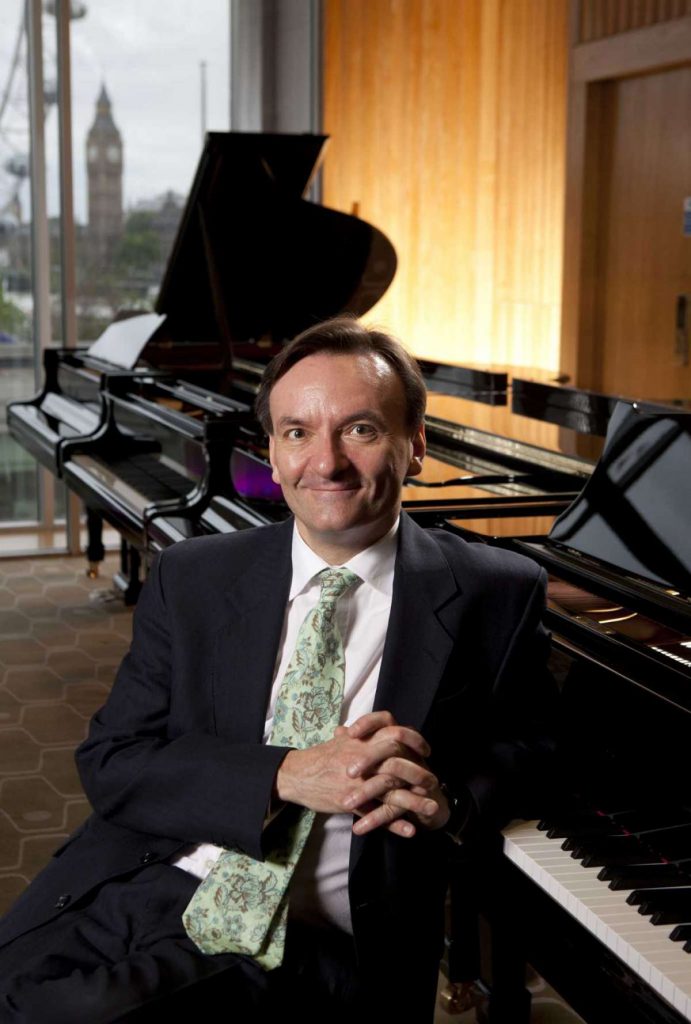Amid Russian weather, Russian warhorses gallop with Hough, Litton, DSO

The winter storm proved a major upset to the Dallas Symphony Orchestra’s schedule this weekend. Thursday night’s concert was canceled and Friday night truncated by half.
Saturday evening was the only offering of the scheduled program in full, which featured the return of former DSO music director Andrew Litton and guest pianist Stephen Hough. A pair of major works by Tchaikovsky and Rachmaninoff comprised the concert’s substance.
Be it the allure of the Russian musical literature, the nostalgia of Litton’s 12-year tenure with the ensemble from 1994-2006 —a period that saw the DSO make great strides in visibility and influence —or traded tickets from Friday’s cancellation, Saturday night drew the most densely packed audience the Meyerson Symphony Center has seen in months, filling the hall from the floor to the grand tier.
Tchaikovsky’s Piano Concerto No. 1 opened the program. Hough, Litton, and the DSO are certainly no strangers to collaborating, with a 2004 recording of Rachmaninoff’s piano concertos that won the Classical Brits Award and is widely considered the best since the composer’s own.
Hough’s survey of the work placed the outer movements in excitedly brisk tempos, though dexterous articulation and a splendid sense of ebb and flow throughout gave the piece exquisite depth and dimension.
The opening chords of the Allegro—monumental and thunderous—was led by exuberant ensemble brass and horns. Hough’s wide octaves and elegant arpeggios responded elegantly. However, Litton’s gestural shaping facilitated little cohesion between the soloist and orchestra. Tempo shifts were on more than one occasion maladroit and a bit muddy.
The rustic middle movement saw refreshingly tight coordination within the orchestra, led by a tender subject provided by solo flute. Exchanges between Hough and ensemble soloists we playful and vivid on the jovial dance theme. The stormy finale was, at times, irretrievably rushed, however Hough maintained presence and clarity with the contrasting second theme of the movement.
Rachmaninov’s Symphony No. 2, premiered in St. Petersburg in January of 1908, was part of his return to composing after a ten-year hiatus precipitated by the cataclysmic failure of his First Symphony. Set in the traditional four movements, it stretches just shy of an hour in length and is among his most popular works in both Russia and the United States.
Litton, here too, favored speedy tempo settings that too often set violins and violas racing ahead of the rest of the ensemble. Opening with a somber phrase in low strings, the beginning was stately and dark before tempo increases and thickening textures led to a climactic orchestral tutti. The ensuing passages felt overly swift, the textures bordering on murky and cacophonous. Still, a stunning clarinet solo on the lyrical second theme broke through with welcome brilliance.
The tuneful middle movements were executed smartly. Here, Rachmaninoff’s propensity for beautifully crafted earworms allowed for the DSO to shine in its customary, cinematic splendor. The dancing scherzo of the second movement, though again a touch too fast, was clear and eloquent. The Adagio, slow and contemplative, saw additional elevation from solo clarinet, balanced by attentive violins on the movements melodic material.
A robust finale, featuring a brief march and vibrant tarantella, recalled the previous themes of the work before a fine, cohesive finish.


